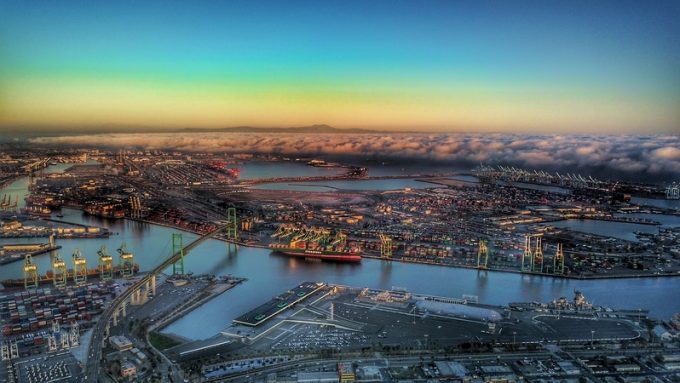Looks like rain: Panama Canal Authority eyes return to normal service
The Panama Canal could be back at nearly full capacity in time for this year’s ...

US west coast ports are bracing for a surge in imports, driven by the convergence of supply chain and geopolitical chaos – and there’s little sign of an imminent return to normal.
Factors include the resumption of inventory build-up, returning flows that had been diverted to other US gateways during last year’s labour contract negotiations, a knock-on effect from problems affecting transits through the Panama and Suez canals and concerns about potential disruption at east coast ports as port labour contract negotiations get under way.
“There’s a perfect storm coming for the west coast,” predicted Weston LaBar, SVP industry relations at Cargomatic.
The west coast ports have clocked up strong increases in throughput in recent months, reversing the loss of momentum to rivals on the US east and Gulf coasts, and this trend is expected to continue.
Mr LaBar pointed out that shipping rates from Asia to the west coast had outpaced rate increases to east coast ports.
“This shows the ocean carriers are bullish,” he said.
One element still missing in the equation is solid shipper input. He said: “Most shippers have not given their forecasts yet,” adding that these should come in after the Chinese New Year holiday next month.
The multi-fuelled boost in volume is causing some concern about the ability of ports and inland carriers to manage without suffering congestion.
“There are always bottlenecks when you transition from a slow period to a busy one,” explained Mr LaBar.
Still, he is not concerned. He does not anticipate an astronomical increase in volume. Moreover, port infrastructure is in better shape than at the early part of the pandemic, when volumes climbed through the roof.
“A lot of infrastructure projects at the ports have been completed,” he said. and he noted that ports and terminals were getting ready for a spike in volumes. For example, restricting the number of empty containers they are taking on, to leave ample space for imports.
“I feel the ports should be able to handle the increased volume,” agreed Paul Brashier, VP drayage and intermodal of ITS Logistics.
For him, one question mark is over trucking’s capacity to cope with elevated volumes. The pronounced decline in volume at Los Angeles and Long Beach caused companies to reduce capacity and mothball equipment, he pointed out, adding that ITS was adding capacity.
The looming transition to electric trucks in California is another brake on capacity. A mandate has recently been postponed, but this does not really change the picture significantly, according to Mr LaBar.
“Everybody views it as though it is already in effect. The question if you want to get a [diesel] truck, is ‘if I put a truck on, will it be kicked out once the waiver is out?’”, he said.
Chassis proved an Achilles heel in the congestion of 2020-21, as many were in the wrong place, and others used with containers as storage space on wheels when warehouse capacity was tight. The supply situation has since improved, but there are other headaches.
The International Longshore and Warehouse Union (ILWU) insists carriers that arrive at the ports with privately owned chassis have to produce proof of ownership. For ITS, this is a headache.
“Every day we have hundreds of chassis in play. We don’t know at the beginning of the day which chassis goes where,” said Mr Brashier.
ITS now gives every driver documentation for every chassis in its pool, which is a cumbersome solution.
Apparently, the ILWU demands documentation to prove ownership because otherwise it has jurisdiction on the operation and repair of chassis, which is a way of guaranteeing jobs for mechanics.
According to Mr LaBar, the problem stems from a lack of dialogue between truckers and the union. Unlike the terminals, truckers and chassis pool owners do not have contractual relationships with the union, he pointed out.
“We have to get everybody to the same table,” he said.
Notwithstanding these issues, there is confidence that the west coast gateways should be able to manage an increase in throughput – nobody expects a spike like that seen in 2020/21.
Comment on this article